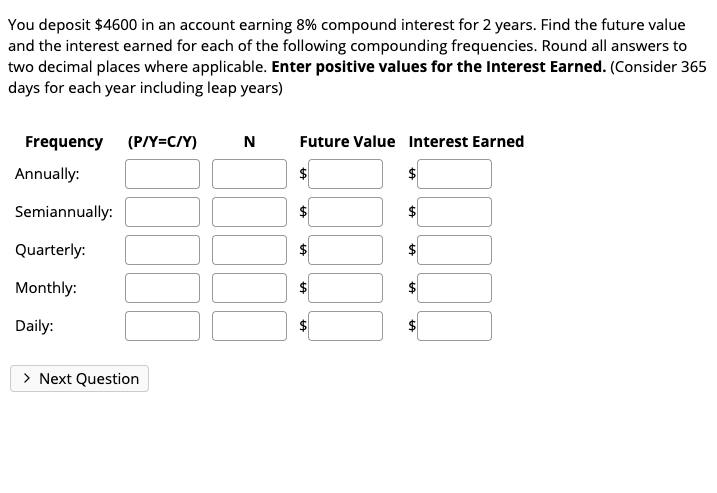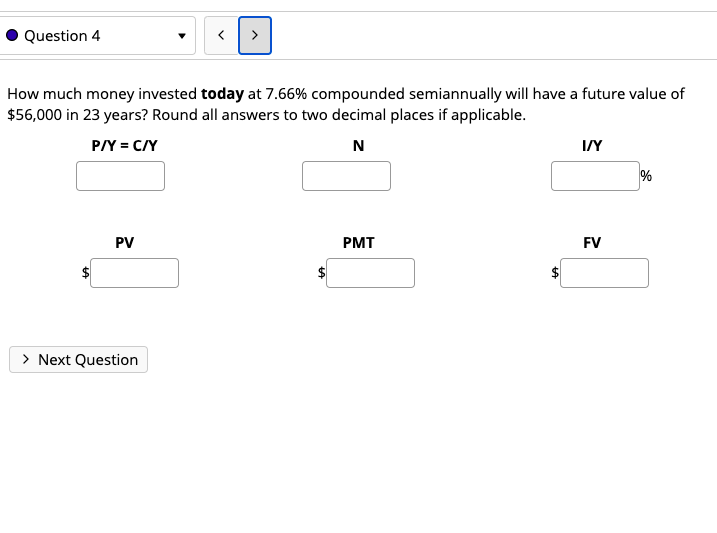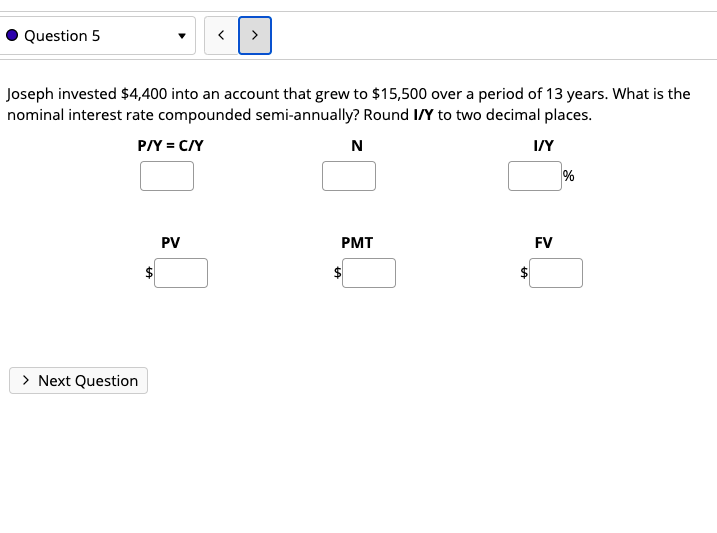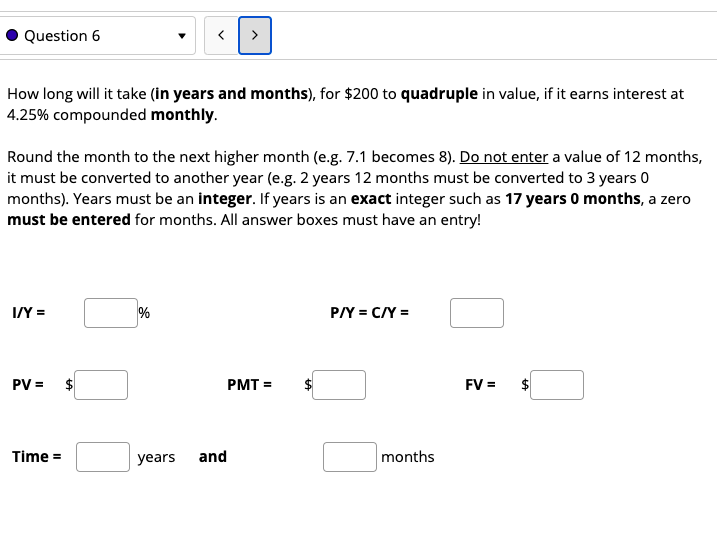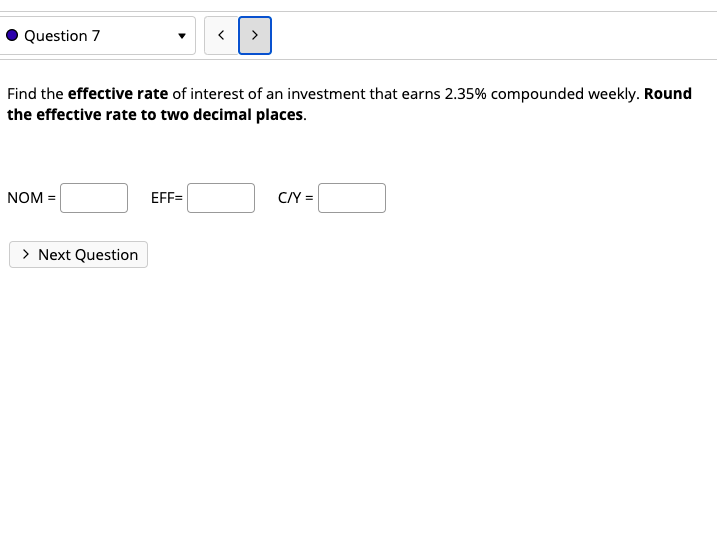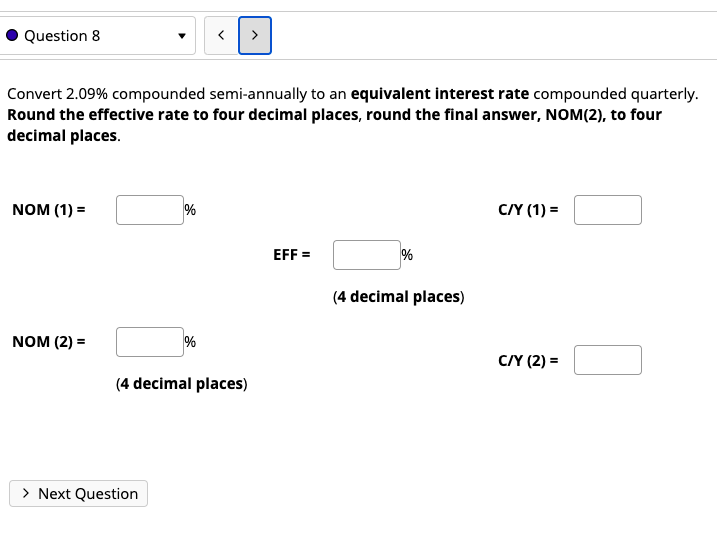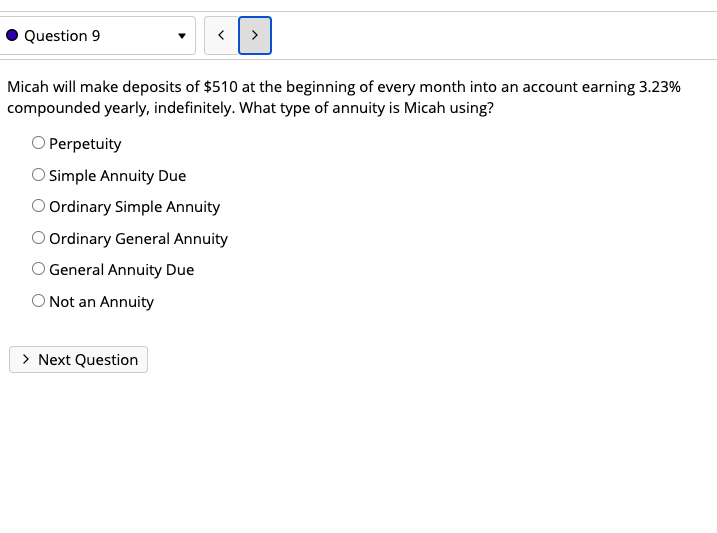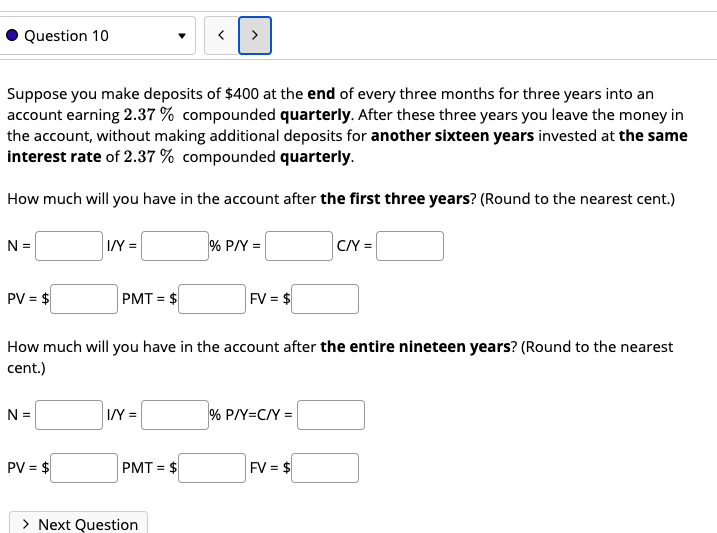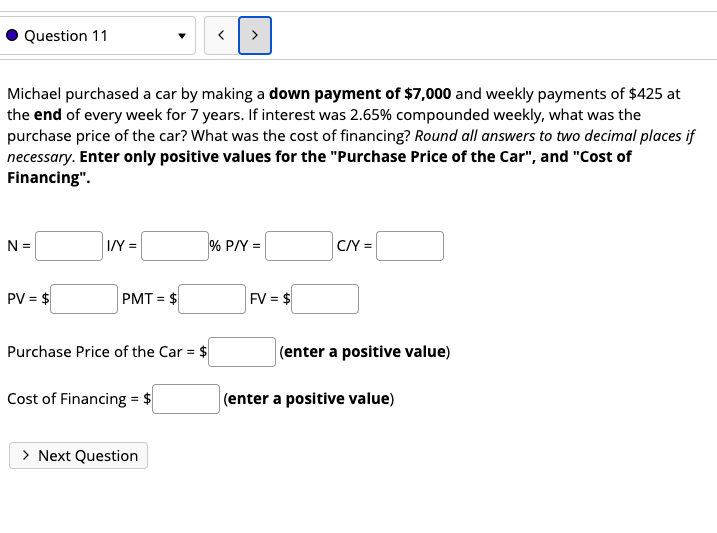PLEASE HELP ME ANSWER THESE QUESTIONS
THERE IS NO FORMULA JUST BY USING SCIENTIFIC CALCULATOR
You deposit $4600 in an account earning 8% compound interest for 2 years. Find the future value and the interest earned for each of the following compounding frequencies. Round all answers to two decimal places where applicable. Enter positive values for the Interest Earned. (Consider 365 days for each year including leap years) Frequency (P/Y=C/Y) N Future Value Interest Earned Annually: Semiannually: Quarterly: Monthly: Daily: > Next QuestionAn investment with an initial deposit of $12,126 is growing at an interest rate of 4.17% compounded quarterly. Round all answers to two decimal places where necessary. 1. Find the accumulated amount of the investment at the end of 4 years. P/Y = C/Y = N = I/Y = % PV = $ PMT = $ FV = $ 2. At the end of the 4 years, the interest rate changes to 3.51% compounded semi-annually. Calculate the accumulated amount in this investment at the end of 9 years from the initial deposit of $12,126. P/Y = C/Y = N = W/Y = % PV = $ PMT = $ FV = $ 3. Find the total amount of interest accumulated during the entire 9 years of the investment. Total Interest = $ (enter a positive value). Question 4 How much money invested today at 7.66% compounded semiannually will have a future value of $56,000 in 23 years? Round all answers to two decimal places if applicable. P/Y = C/Y N I/Y % PV PMT FV 64 > Next QuestionI Questions 1r H Next Question. Question 8 Convert 2.09% compounded semi-annually to an equivalent interest rate compounded quarterly. Round the effective rate to four decimal places, round the final answer, NOM(2), to four decimal places. NOM (1) = % C/Y (1) = EFF = % (4 decimal places) NOM (2) = C/Y (2) = (4 decimal places) > Next Question. Question 9 Micah will make deposits of $510 at the beginning of every month into an account earning 3.23% compounded yearly, indefinitely. What type of annuity is Micah using? O Perpetuity O Simple Annuity Due O Ordinary Simple Annuity O Ordinary General Annuity O General Annuity Due O Not an Annuity > Next QuestionI Question 1|] 4 Next Question :3 . Question 11 Michael purchased a car by making a down payment of $7,000 and weekly payments of $425 at the end of every week for 7 years. If interest was 2.65% compounded weekly, what was the purchase price of the car? What was the cost of financing? Round all answers to two decimal places if necessary. Enter only positive values for the "Purchase Price of the Car", and "Cost of Financing". N = VY = % P/Y = C/Y = PV = $ PMT = $ FV = $ Purchase Price of the Car = $ (enter a positive value) Cost of Financing = $ (enter a positive value) > Next QuestionI Question 12 v Next Question . Question 13
